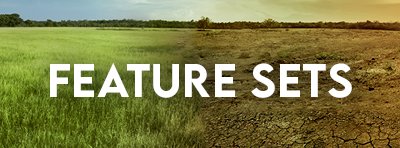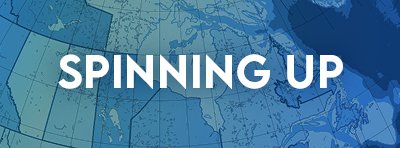
In Canada’s North, water is life
Canada is a famously vast country. For remote jurisdictions with limited resources, coming by accurate data on groundwater, surface water and climate is hard — never mind building models and simulations. Scientists Ryan Connon and Isabelle de Grandpré in the Northwest Territories see a chance for Canada1Water to change that.

The Globe and Mail - Loss of snow and impact on water supplies tied to climate change
A new study - highlighted in The Globe and Mail - reveals the impact that climate change has played on snowpack across the Northern Hemisphere, and the accelerating shift toward an increasingly snowless future. The implications for regional hydrology are not uniform across Canada or any other nation (some regions may experience more snowpack, others less), but it is clear that changing snowpack dynamics will certainly result in changes to the overall behaviour of hydrologic systems and exacerbate water resources vulnerability in the coming decades.

Global News - Alberta facing water restrictions, ‘agricultural disaster’ if drought conditions persist
A new article in Global News sounds the warning call for water resources managers in Alberta, which seems set to experience yet another year of unprecedented drought. The article highlights the many knock on effects that limited snowpack over the winter months can cause later in the year. From dwindling potable water supplies and restrictions on acceptable water use in communities, to increasing wildfire risk, crop failure and shrinking cattle herds, our changing climate is wreaking havoc on all aspects of society.

CNN - New maps show where snowfall is disappearing
“Less snow falling from the sky also means less snow piling up into snowpack — a deep, persistent cover of snow that accumulates during the winter. It is crucial for water supplies because it acts like a natural reservoir, storing water as snow during wet times and then releasing it in the form of snowmelt when water is harder to come by, University of Washington environmental engineering professor Jessica Lundquist told CNN.”

CANADIAN WATER RESOURCES ASSOCIATION, Water News Volume 42, No 4 – Fall 2023: Eliminating the unknowns: Canada1Water reveals the country’s water future with a new continental-scale model.
The Canadian Water Resources Association has included a feature article on the Canada1Water project in the latest issue of Water News CWRA's official magazine.
"Few decisions are more crucial to our future than how we manage freshwater resources. Wise choices require a clear understanding of conditions today and how they are likely to change over time. That’s exactly what the Canada1Water project aims to provide by giving Canadian decision-makers an all-new continental-scale model of groundwater, surface water and climate interactions that looks out to the end of this century".

Agriculture Canada highlights C1W - Researchers protect environment, human and animal health with natural capital
Agriculture Canada has spotlighed the Canada1Water project in their latest "Scientific achievements in agriculture" feature article, and the ways that the C1W project continues to benefit (and benefit from) the "Environmental Change One Health Observatory" (ECO2) initiative at AAFC.

New York Times - A Tangle of Rules to Protect America’s Water Is Falling Short
“AMERICA’S STEWARDSHIP of one of its most precious resources, groundwater, relies on a patchwork of state and local rules so lax and outdated that in many places oversight is all but nonexistent, a New York Times analysis has found.”

NRCan’s Simply Science highlights C1W - The science of seeing into the future: Canada’s groundwater
“With scientists predicting major water shortages in less than 10 years, we need to make smart choices today about how to use and protect our water resources. The Canada1Water project aims to help. Co-led by Natural Resources Canada’s Groundwater Geoscience Program and Aquanty Inc., it will give Canadians powerful new tools to understand the country’s water future.” - Simply Science

The Conversation - Understanding the dynamics of snow cover in forests can help us predict flood risks
An piece in The Conversation highlights the important role that winter snowpack plays on hydrology, and how a better understanding of snow depth in forested catchments can help us better predict flood risks during the spring freshet.

A data-driven feedback loop
As General Manager of Conservation Ontario, Angela Coleman sees abundant opportunities for conservation authorities to get value from Canada1Water — and to give back in return.

Bringing the model to the masses
Delivering C1W data to the public demands a user-friendly web portal that’s built for a digitally savvy audience. Derek Steinmoeller, leader of the Aquanty team spearheading that effort, offers a preview of what’s in the works.

What does a wildfire cost?
By the end of summer 2023, Canada had lost a record 13.7 million hectares of land to wildfires. Dan McKenney and Emily Hope of the Canadian Forest Service explain how C1W data is helping shed light on the true costs of wildfires and informing new fire management approaches.

Taking the plunge into immersive science
Are tools like virtual and augmented reality the next frontier in hydrologic modelling? C1W co-lead Hazen Russell and Oil, Gas and Salt Resources Library manager Jordan Clark think the answer is yes — and they’re putting the proof in people’s hands.

Model outputs: What will we see?
With Canada1Water approaching the finish line, focus is shifting from inputs to outputs. Aquanty’s Steve Frey explains what the model will generate and how its projections might be used.

The science of seeing into the future: Canada’s groundwater
A new article in Natural Resources Canada’s “Simply Science” series introduces the Canada1Water project. This is a great little article that highlights the importance of the work being completed through the C1W project, and the fact that this type of comprehensive hydrologic modelling has never been done before at the national/continental scale.
